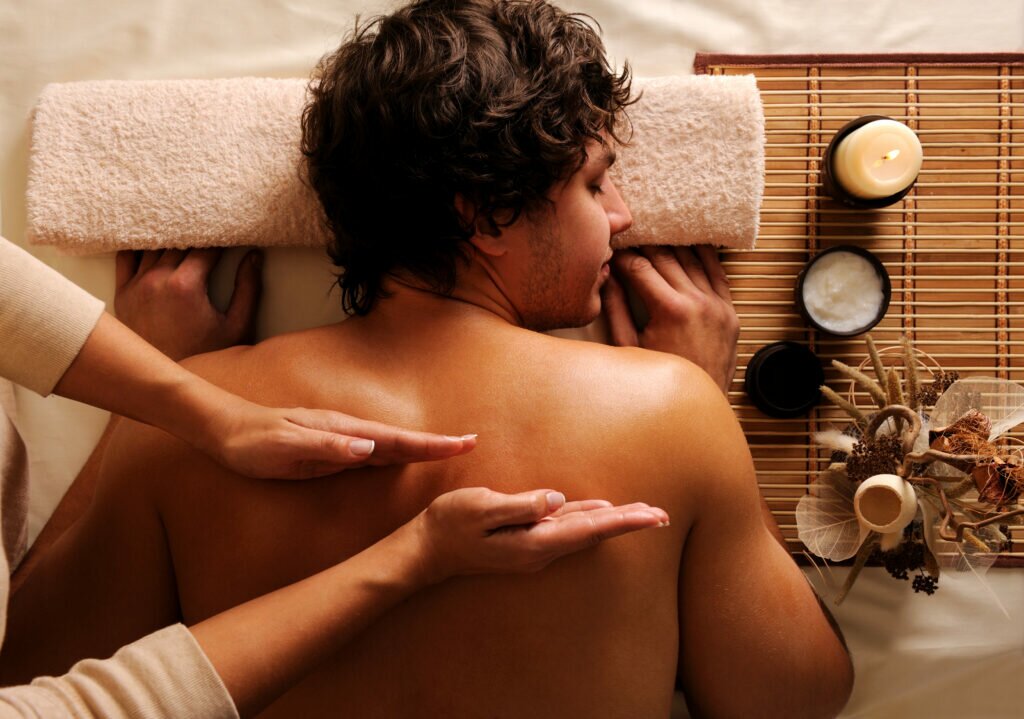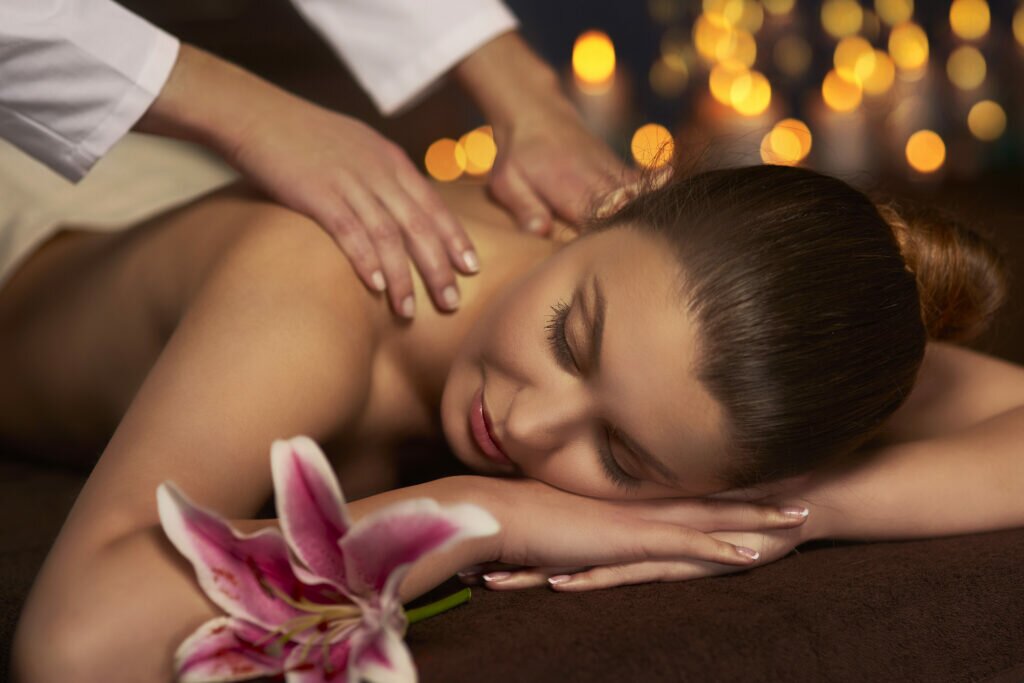In today’s fast-paced world, stress and anxiety have become prevalent issues affecting our overall well-being. People are seeking natural and holistic approaches to promote relaxation, relieve tension, and restore balance to their bodies and minds. Ayurvedic massage, rooted in ancient Indian traditions, is gaining popularity as an effective therapeutic practice that offers numerous health benefits. In this article, we will explore the essence of Ayurvedic massage and its potential to enhance your well-being.
What is Ayurveda Massage?
Ayurveda massage, also known as Abhyanga, is a traditional form of massage therapy rooted in the principles of Ayurvedic medicine. It is a holistic approach that aims to balance the body, mind, and spirit. The word “Ayurveda” comes from Sanskrit and means “knowledge of life” or “science of life.” Ayurveda massage focuses on restoring the body’s natural energy flow and removing any blockages or imbalances.

The Philosophy of Ayurveda Massage
Ayurveda massage is based on the belief that good health depends on a balance between the body, mind, and spirit. According to Ayurvedic principles, the body is composed of three doshas: Vata (air and space), Pitta (fire and water), and Kapha (earth and water). When these doshas are in balance, the body functions optimally. However, imbalances in the doshas can lead to physical and mental ailments.
Techniques Used in Ayurveda Massage
Ayurveda massage incorporates various techniques to restore balance and promote well-being. Here are some of the common techniques used:
- Abhyanga: This is the primary technique used in Ayurveda massage. It involves the application of warm, herbal oil to the body using specific strokes and movements.
- Marma Points: Ayurveda massage also focuses on stimulating specific energy points in the body known as marma points. These points correspond to vital organs and systems and are believed to influence overall health and well-being.
- Herbal Poultices: In some Ayurveda massage sessions, warm herbal poultices may be used to provide therapeutic benefits. These poultices contain a blend of medicinal herbs that help in relaxation, detoxification, and rejuvenation.
- Essential Oils: Aromatherapy plays a significant role in Ayurveda massage. Essential oils derived from herbs and plants are often used to enhance the therapeutic effects of the massage.
The Essence of Ayurvedic Massage
Ayurvedic massage is an integral part of Ayurveda, an ancient holistic healing system that originated in India over 5,000 years ago. Ayurveda emphasizes the balance between the body, mind, and spirit for optimal health. Ayurvedic massage, known as “Abhyanga,” incorporates unique techniques using warm herbal oils customized according to an individual’s unique constitution or dosha.

The Benefits of Ayurvedic Massage
- Stress Reduction: Ayurvedic massage is renowned for its ability to reduce stress and promote relaxation. The gentle, rhythmic strokes combined with warm oils help calm the nervous system, soothing both the body and mind. This aids in relieving anxiety, promoting better sleep, and enhancing overall mental well-being.
- Detoxification: Ayurvedic massage techniques stimulate the lymphatic system, aiding in the elimination of toxins from the body. The herbal oils used in the massage penetrate the skin, nourishing the tissues and facilitating detoxification, leaving you feeling rejuvenated.
- Improved Blood Circulation: The rhythmic motions and gentle pressure of Ayurvedic massage help improve blood circulation throughout the body. Enhanced blood flow delivers vital nutrients and oxygen to the cells, promoting healing, and revitalizing the entire system.
- Pain Relief: Ayurvedic massage can be effective in alleviating various types of pain, including muscular tension, joint stiffness, and headaches. The combination of oils, massage techniques, and pressure points work synergistically to reduce pain and improve flexibility.
- Skin Nourishment: The application of warm herbal oils during Ayurvedic massage not only helps relax the muscles but also nourishes and rejuvenates the skin. These oils penetrate deeply, moisturizing the skin, promoting a healthy glow, and reducing signs of aging.
Frequently Asked Questions (FAQs)
FAQ 1: Can anyone receive an Ayurveda massage?
Yes, Ayurveda massage is suitable for most people. However, it is important to consult with a qualified Ayurvedic practitioner if you have any specific health concerns or medical conditions.
FAQ 2: How long does an Ayurveda massage session typically last?
The duration of an Ayurveda massage session can vary depending on individual needs and preferences. On average, a session may last between 60 to 90 minutes.
FAQ 3: Are there any side effects of Ayurveda massage?
Ayurveda massage is generally safe and well-tolerated. However, some individuals may experience mild soreness, redness, or detoxification reactions after the massage. These effects are temporary and usually subside within a day or two.
FAQ 4: How often should one receive an Ayurveda massage?
The frequency of Ayurveda massage sessions depends on individual requirements. Some individuals may benefit from regular weekly sessions, while others may find monthly sessions sufficient. It is best to consult with an Ayurvedic practitioner to determine the ideal frequency for your specific needs.
FAQ 5: Can Ayurveda massage help with specific health conditions?
Ayurveda massage is known to provide relief from various health conditions, including stress, anxiety, insomnia, muscular tension, and joint pain. However, it is essential to consult with a qualified Ayurvedic practitioner for personalized advice and treatment.
FAQ 6: How can one find a qualified Ayurvedic practitioner for an Ayurveda massage?
To find a qualified Ayurvedic practitioner, it is recommended to seek recommendations from trusted sources, such as friends, family, or healthcare professionals. Additionally, online directories and professional associations specializing in Ayurveda can provide a list of certified practitioners in your area.
Conclusion
Ayurvedic massage is a holistic practice that offers a multitude of benefits for your overall well-being. From stress reduction and detoxification to improved circulation and pain relief, the ancient wisdom of Ayurveda provides a pathway to balance and harmony. Incorporating regular Ayurvedic massages into your self-care routine can have a profound impact on your physical, mental, and spiritual health.
Disclaimer: The information provided in this article is for educational purposes only and does not constitute medical advice. Consult with a qualified healthcare professional before making any changes to your diet or lifestyle.

